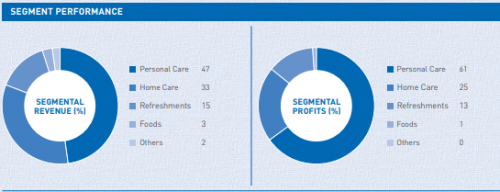By Pilli Chaudhuri Freelance Consultant @IndusGuru
“It’s only after you’ve stepped outside your comfort zone that you begin to change, grow, and transform.”― Roy T. Bennett
The 31700 crore all stock deal of Hindustan Unilever Lever acquiring GlaxoSmithkline Consumer Healthcare can safely be said to be the current talk of the business world. The acquisition is likely to be completed by the end of next year and HUL will add the brands Horlicks, Boost, Viva and Maltova brands to its kitty. HUL Chairman Sanjiv Mehta says this merger will push turnover in Food and Refreshments business to over Rs 10,000 crore, making HUL one of India’s largest F&R businesses. GSK’s brands will also see a three-fold jump in distribution since HUL reaches over 8.2 million retail outlets in the country. (Reference: Economic Times dated Dec 04, 2018)
But why such a buzz?
Conspicuously, it is because of the huge bid that HUL has made making it one of the most expensive mergers and HUL winning against competitor Nestle to crack the deal. But the real reason of why the deal is of such importance to all stakeholders is highly strategic.
Unilever operates into 3 categories majorly – Homecare, Personal care and Foods & Refreshments worldwide
Unilever has 67% stakes in HUL as of now. Unilever’s holding in HUL will fall from 67.2% to 61.9%. GSK Plc will become the second-largest shareholder in the merged entity with 5.7% stake. It can offload its stake to any investor and Unilever does not have exclusive rights to buy these shares. (Reference: Economic Times dated Dec 04, 2018)

At global level, Unilever’s F&R business dominates the other two categories revenue wise but in India, the scenario presently is quite the opposite. HUL tries to linearize its business model with Unilever. Unilever had Foods and Refreshments divisions as separate entities and HUL had Foods and refreshments combined. To align with Unilever strategies, HUL separated its foods and refreshments segment. But eventually due to Kraft Heinz trying to merge Unilever with itself, Unilever unified its food and refreshment category. Earlier this year, HUL combined its food and refreshments business into a single division to increase agility. The merged business — including Knorr soup, Kissan jam, Bru coffee, Lipton tea and Magnum ice-cream. Bottom line is, all subsidiaries of Unilever try to follow the same standards as Unilever. (Reference: Economic Times dated Dec 04, 2018)
Some of the other factors worth taking a look at:
- Having its presence in more than 100 countries, Unilever is aiming to fortify its strong markets, India being one of them as it is the highest performing country in the south Asian cluster (India, Nepal, Bangladesh, Sri Lanka, Pakistan)

(Source: HUL Annual Report 2017-2018)
- HUL-GSK merger will definitely strengthen the F&R category of HUL which currently isn’t doing as well as the Home Care and Personal Care category. This is a new segment for HUL and they don’t have market expertise. Manpower merger is something they should be thinking about. Even though the agreement does not include any clause stating the absorption of GSKCONS employees, they are likely to retain the experts in this brand. Moreover, most of GSKCONS top management consists of ex-HUL employees, so they understand the company culture well. HUL doesn’t have too many Investor Relation issues but this merger might create one. The payroll of people absorbed from GSKCONS would also be a big question. Human Resources at HUL will have a tough time evaluating whom to keep and whom to let go.
- Additional strategy change may occur as every new CEO brings new ideas. Since Paul Polman has decided to retire, new CEO will have different strategies at Unilever.
- In HUL-GSK agreement, HUL has agreed to undertake the distribution of GSK’s OTC (Over the Counter) products like Sensodyne, Eno, Otrivin, Crocin etc. HUL has positioned its factories very strategically based on certain locational advantages, distribution costs considerations and fiscal benefits of that state. But GSK’s consumer segment factory locations are not in HUL’s control. HUL cannot relocate factories hence distribution network might be strained.
- HUL tries to occupy a segment as soon as it feels the threat from its competitors. It tries to occupy the space before competitors enter and gain first mover advantage. This was also seen in the past – when TATA was about to launch Tetley green tea, HUL launched Lipton before TATA could.
Even though a large part of Unilever’s global revenue comes from food, many analysts believe that HUL had got its food strategy in India wrong. But HUL is aggressively entering the food biz. Ayurvedic breakfast range under Ayush has been launched to enter the steadily growing health conscious market space. It has also acquired Karnataka-based Vijaykant Dairy and Food Products for its ice cream and frozen desserts brand, Adityaa Milk. This move, along with Walls and Magnum will close the gap with market leader Amul. Thus, HUL-GSKCOMS merger is in sync with the F&R expansion strategy of HUL.
#Unilever #GlaxoSmithKline #Horlicks #HUL #acquisitions
Disclaimer: The opinions expressed in this column are that of the writer. The facts and opinions expressed here do not reflect the views of IndusGuru Network Partners. The network is a curated platform for independent management consultants across all domains to help businesses grow and thrive!
